Current Research Projects: (click on project title for more details)
 |
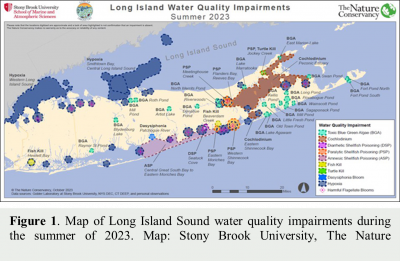 |
1. National Oceanic and Atmospheric Administration (NOAA) (2025-2028) – “Targeted ECOHAB: Assessing nitrogen-acidification synergies on HAB development and toxicity for water quality and shellfish management within an urban estuary” (Greenfield and Vlahos) We are investigating the biogeochemical impacts on bacterial and phytoplankton assemblages that lead to Harmful Algal Blooms in estuaries. |
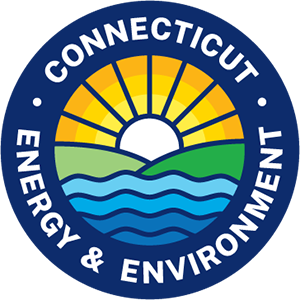 |
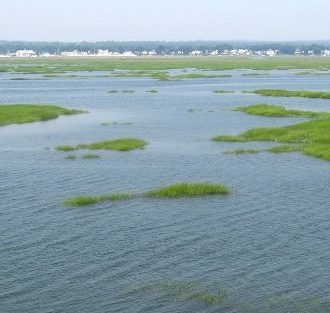 |
2. Department of Energy and Environmental Protection (DEEP) (2023-ongoing) – Carbonate Chemistry in Long Island Sound Waters (Vlahos). This project is dedicated to long term trends in carbon budgets and acidification in Long Island Sound. |
 |
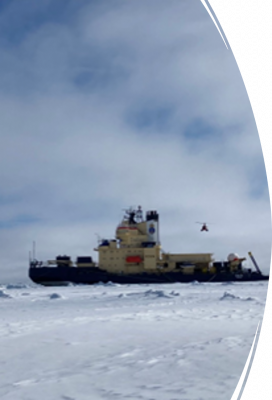 |
3. National Science Foundation (2023-2026) – Boron Alkalinity in Marginal Ice Zones (BAMZ) (Vlahos) We joined the Swedish ARTofMELT research groups on the Icebreaker Oden in a six-week project to core sea ice in the Fram Strait. Our project aimed at examining divergences in the alkalinity parameterizations of annual and multiyear sea ice. |
 |
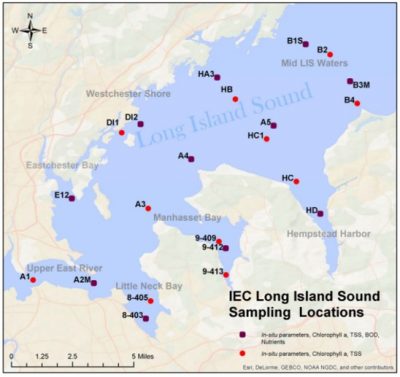 |
4. Interstate Environmental Commission (IEC) (2024-ongoing) (Vlahos) Western Long Island Sound Biogeochemistry (PI: Vlahos) We are working on a biogeochemical time series in western LIS embayments to ascertain stressors for this vulnerable region. |
 |
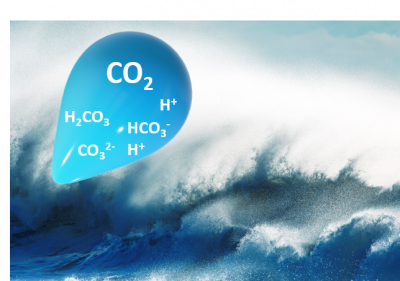 |
5. National Science Foundation (2022-2026) – “Spray-mediated air-sea gas exchange of carbon dioxide in high winds” (PIs Vlahos and Romero) This project builds upon the foundational Andreas Gas Exchange Spray model (AGES) developed through NSF project #1630846 for non-reactive gases by expanding its parameterizations to: O1) Include gas exchange of carbon dioxide (CO2) through sea spray. O2) Incorporate the entire carbonate system (carbonate and bicarbonate) associated with CO2 including alkalinity and pH profiles across sea spray drop evolution. The proposal also seeks to build upon results of NSF projects #1924686 and #2121646 to: O3) Incorporate a physics-based sea spray model into the surface wave-breaking model efforts. O4) Combine the CO2 gas exchange component of the AGES model from O1 and O2 to the dynamic modeling framework in O3 to provide a tool for evaluating gas exchange in the Southern Ocean. |
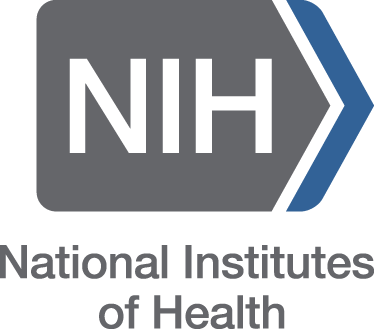 |
 |
6. National Institute of Health RO1 (2021-ongoing) “CKDu in Sri Lanka” (Anand and Vlahos) Our project links environmental water quality to disease prevalence focusing on agrochemicals in well waters, water reservoirs and rivers in endemic regions. (PIs Anand, Vlahos). This is an extention of our R21 Project (see below). |
_____________________________________________________________________________________________________________
Completed:
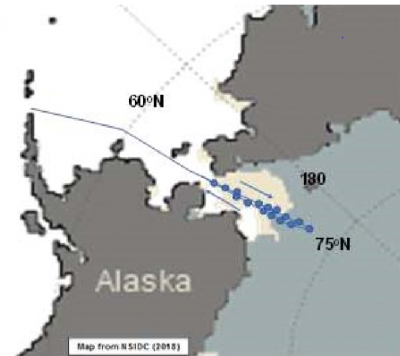 |
2. National Science Foundation (2021-2024) – “Alkalinity and Biogeochemistry of Arctic Marginal Ice Zones” (PI Vlahos) This NSF funded research cruise (NSF Award #1854454) of Arctic Marginal Ice Zone Alkalinity (AMIZA) presents a timely opportunity to sample across the marginal ice zone and adds to the limited number of Arctic data sets of the carbonate system. This project is also unique in its inclusion of many associated biogeochemical parameters. Please visit the project page for more details. |
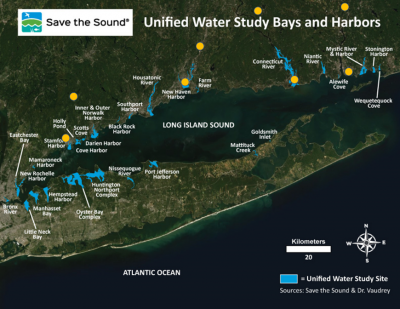 |
3. Environmental Protection Agency – Long Island Sound Study (EPA-LISS) (2021-2023) “Alkalinity in Long Island Sound Embayments (ALISE)” (PIs Vlahos & Whitney) Station Locations for the ALISE project. Orange dots represent the monthly sampling locations throughout the year including drought and heavy rainfall. The blue regions include high resolution summer sampling Shell Day events coordinated with Save the Sound and CT DEEP. Note high resolution sampling will be finalized upon meeting with the Shellfish Commission at their annual meeting in January 2021 and with consensus from all co-PIs |
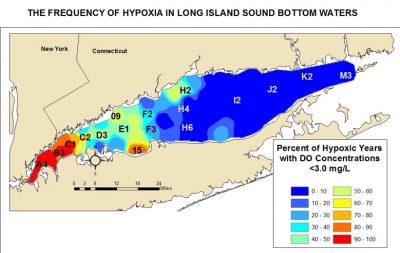 |
5. Environmental Protection Agency – Long Island Sound Study (EPA-LISS) (2019-2022) “LIS Respire Program” (PIs Vlahos, Vaudrey & Whitney) |
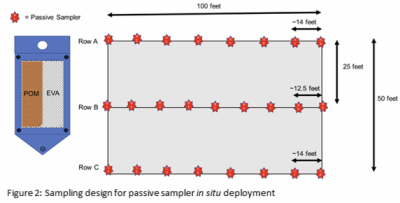 |
6. Environmental Protection Agency – “Passive Samplers in marine waters and porewaters” (2019-2022) – (Shipley, Vlahos, Burgess) |
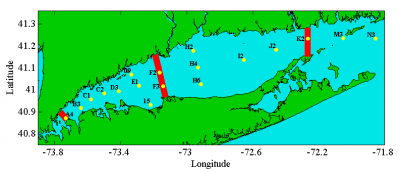 |
Environmental Protection Agency – Long Island Sound Study (EPA-LISS) (2017-2019)”Nutrient and Carbon Fluxes through Long Island Sound, Linking River Sources to Impacted Areas” (PIs Whitney & Vlahos)This project provided vital new information on nutrient and carbon transports, assess net autotrophy or heterotrophy, and link river loading to LIS conditions. The flux focused approach is transferable to other estuaries to provide new scientific information for management. Understanding where the transitions between net carbon burial and net carbon export occur can help prioritize nitrogen mitigation efforts within LIS watersheds. Th project also provides information for regional and national scale efforts to constrain the carbon and nitrogen budgets of the US coastal zone (King et al. 2007, Najjar et al. 2010). |
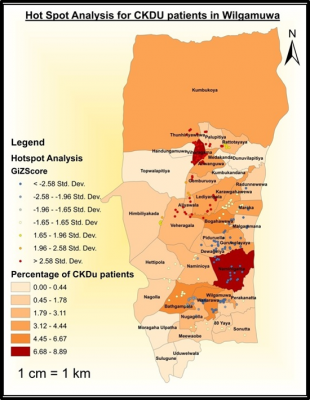 |
National Institute of Health (NIH-Fogarty R21) (2016-2019) “Tracking the Progression of Chronic Kidney Disease of Unknown Etiology in Sri Lanka” (PIs: Vlahos, Schensul, Haider) Objective: To identify the factors associated with the rapidity of progression of CKDu through Stage 3 (50% of kidney function) to End Stage Renal Disease (ESRD). Specific Aims:
|
 |
Dominion Foundation (2016-2017, 2018-2019) “Dominion-University of Connecticut Dissolved Oxygen and Carbon Dioxide Time Series (DUCOS)” (PIs Vlahos and Astitha)
The award was used towards the purchase of a Eureka multi-channel probe that contains a Turner C-Sense pCO2 sensor, a dissolved oxygen sensor, pH, temperature and salinity sensors. The system has been plumbed in the University of Connecticut’s seawater facility Rankin Laboratory (Figure 1a) where it is continuously fed seawater and records the parameters. The grant also was used to purchase the supporting computer and software to operate the probe (Figure 1b). The system arrived at UCONN on May 15th 2017 and was online by May 22nd. Current efforts are focused on two projects. The first and foremost is optimizing the data display and setting up live feed. We have been assigned a URL which is being constructed that will be DUSCOS.uconn.edu. |
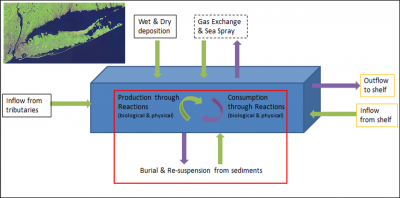
|
Connecticut Sea Grant (2016 – 2018) “Net Carbon and Nitrogen Export of Long Island Sound” (PIs Vlahos & Whitney)
This study provides the basic chemical and physical measurements required to determine the net export of organic and inorganic forms of carbon (C) and nitrogen (N) by conducting focused studies at the outer boundary of Long Island Sound (LIS) to close the C and N balance of LIS. Specifically to:
|
 |
National Science Foundation: (2014 – 2018) “Spray Mediated Gas Exchange” (PIs Vlahos & Monahan)
Gas exchange between the ocean and the atmosphere regulates current climate and provides buffering to future greenhouse forcings. Air-sea gas transfer parameterizations for the open ocean require combining microscale and macroscale properties to properly constrain these gas fluxes. Models that broaden traditional wind-driven parameterizations for interfacial gas transfer by accounting for the way that bubbles influence the air-sea exchange of gases have moved the field forward (e.g., Wanninkhof et al.1995; Woolf 1997; Vlahos et al. 2011). Fairall et al. (2000) speculate, however, that sea spray may be an even more efficient agent for air-sea gas transfer; but, to our knowledge, no one has yet quantified this contribution nor produced a theory for spray-mediated gas exchange. Because sea spray is a consequence of wave breaking, with most spray droplets being produced by the bursting of bubbles formed from the entrained air, we hypothesize that spray droplets, as well as bubbles, are intricately linked to gas exchange. Our goal here is to develop a theory for spray-mediated air-sea gas exchange and to produce quantitative estimates of the magnitude of this exchange for a variety of gases. |
 |
Department of Defense Strategic Environmental Research Program (DOD/EPA/DOE) ER-2539 (2015-2016) “Development of an in situ passive sampler for the detection and remediation of explosive compounds” (Vlahos & Tobias)
This project is dedicated to field deployments of the samplers in areas of known contamination parallel with traditional sampling. The expectation is that the samplers will provide an accurate estimate of concentrations in the field. Once these phases are complete the samplers can be used independently for long term monitoring and spatial mapping of target contaminants. |
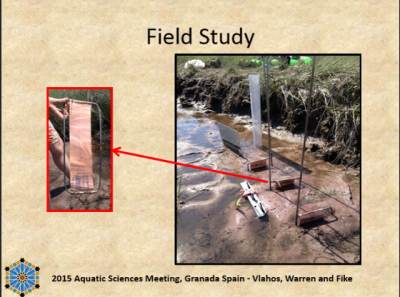 |
Gordon & Betty Moore Foundation (2013-2016) “Cracking the Sulfur Cycle” (Vlahos & Fike)
Sulfate concentrations are critical to understanding the biogeochemical cycling of elements in marine and porewater systems. To date the nature of sulfate measurements requires removal of samples from the field leading to significant disturbances in the system and limitations to sample resolution due to volume restrictions on porewaters. Here a novel in situ passive sampler that is embedded with barium oxalate is optimized for the in situ sampling of sulfate concentrations to improve both the nature of the sampling and the resolution of sulfate profiles that may be obtained |